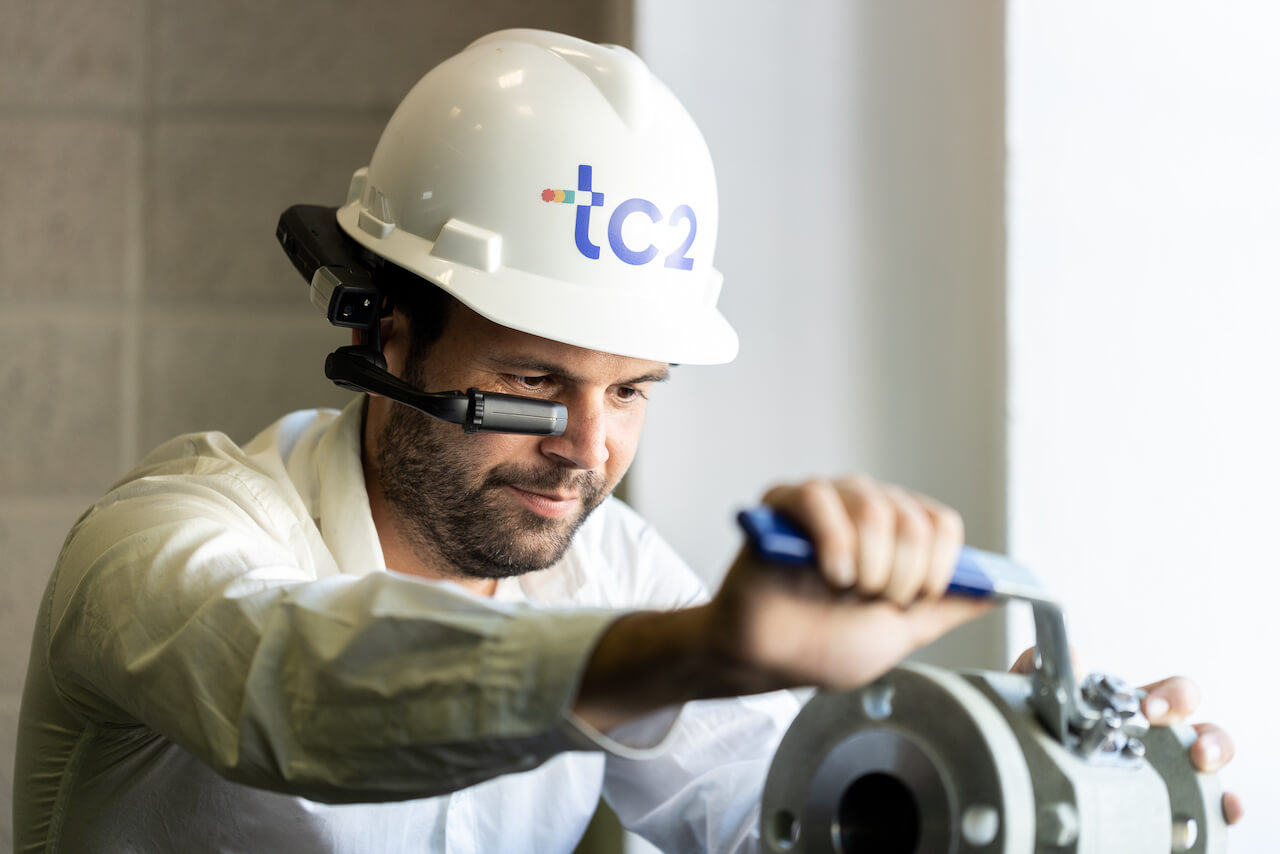Over the years, the engineering world has been the developer and first user of many of the digital technologies that today are common in diffrent fields. One of these is the augmented reality applied to inspections: an internet connection is enough to shorten distances and optimize the management of the company supply chain.
How remote inspection takes place
As TC2 Group we have developed an inspection system with augmented reality technology, which can be installed on any mobile device by the requesting company. The team of experts of Technical Consultancy, the TC2 business unit that deals with this type of consultancy, manages the activity together with engineers in the field through real-time communication and smart-glasses. Thanks to augmented reality (AR), you have a complete and amplified view of the object of the inspection.
This type of remote activity proves even more effective in case of faults, defects or problems that require urgent resolution. During the inspection, the technician in the field, equipped with augmented reality glasses or a mobile device, has the task of framing the machine by confronting with the remote experts, who diagnose the problem with accuracy. The software features allow the expert to draw in static mode and indicate precisely where it is necessary to intervene.
The advantages of remote inspections
The integration of technology in inspections leads to several benefits, including:
- the efficiency of the entire collaboration is increased, thanks to the reduction of time and costs that can be invested in a general improvement of further business processes;
- geographical distances are shortened, allowing companies to choose high-level partners around the world;
- a new and trustworthy relationship is established between the company and suppliers, with real-time interaction between the engineers in the field, suppliers and the quality team;
- the inspection report is enriched with important photo and video materials recorded during the inspection itself.
An ecological and economical choice
From the point of view of environmental impact and carbon emissions, remote inspections are a viable solution to make business processes more sustainable. The savings on staff and material transfers are not only ecological, but also economic in nature, especially when budget constraints are significant.
Considering the shortening of distances in professional relationships that occurs thanks to technology, it is possible to say that remote inspections are the natural evolution of traditional inspections in our sector, not because the latter become obsolete, but because they widen the range of possibilities of create a global network between customers and suppliers.





